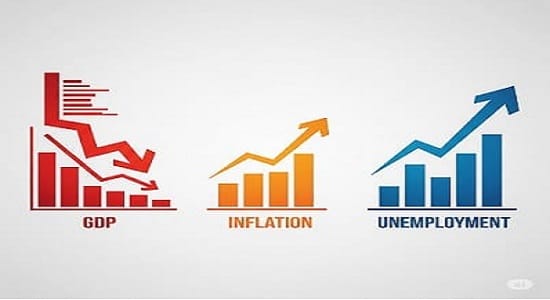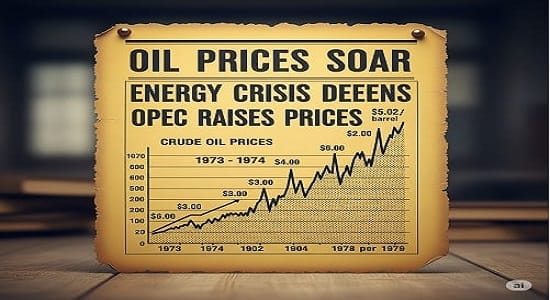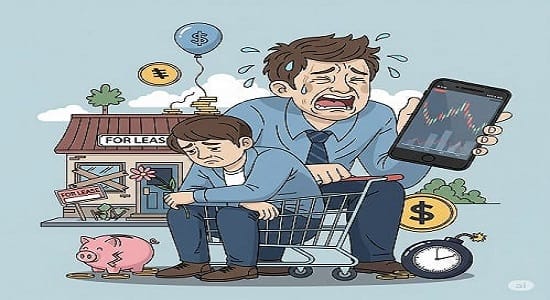Stagflation Explained: How to Navigate a High-Inflation, Low-Growth Economy
Stagflation, In a normal economic cycle, inflation and unemployment don’t increase together. When there’s high inflation, it typically indicates everyone is spending money and companies are expanding—so there are plenty of jobs available. But when it hits, it remains high as the economy slows and unemployment increases. It’s an unusual and problematic mix that can be puzzling for investors, policymakers, and even economists.
What is Stagflation?
Stagflation is a blend of two words:
- Stagnation: Slow or no economic growth
- Inflation: Rising prices of goods and services
So, stagflation = stagnant growth + high inflation + high unemployment.

Key Characteristics of Stagflation:
| Feature | Normal Economy | Stagflation |
| GDP Growth | Moderate to Strong | Weak or Negative |
| Inflation | Controlled (2-4)% | High (above 6%) |
| Unemployment | Low or Stable | High or Rising |
| Consumer Confidence | High | Low |

Historical Example – The 1970s Oil Shock
The most well-known case is the quadrupling of oil prices in the 1970s as a result of geopolitical tension. This resulted in:
- More expensive energy → higher transport & production costs
- Inflation
- Slowing down of international trade
- Increased unemployment in oil-dependent industries
1970s Stagflation Snapshot:
| Year | Inflation Rate (%) | Unemployment Rate (%) | GDP Growth (%) |
| 1973 | 6.2 | 4.9 | 5.6 |
| 1974 | 11.0 | 5.6 | -0.5 |
| 1975 | 9.1 | 8.5 | -0.5 |
Causes of Stagflation:
There is not one, but a few typical causes are:
- Supply-Side Shocks: Abrupt increase in the price of raw materials (such as oil or metals), raises production costs and lowers output.
- Bad Monetary Policy: If a central bank over issues money or maintains low interest rates for an extended period of time, inflation can take off even when growth happens to slow.
- Global Forces: Pandemics, wars, or international tension can slow supply chains and impact trade, sparking inflation and stagnation.
Is India at Risk of Stagflation?
Although India has experienced very high inflation in some periods, overall economic growth has been pretty solid. Nevertheless, the risk may heighten due to worldwide factors such as supply chain dislocations, hike in crude oil prices, or geopolitical tensions.
India’s Key Macroeconomic Indicators (2022-2024):
| Year | GDP Growth (%) | Inflation (%) | Unemployment (%) |
| 2022 | 7.2 | 6.8 | 7.4 |
| 2023 | 6.5 | 5.9 | 7.1 |
| 2024 | 6.8(est.) | 5.3(est.) | 6.5(est.) |
While India is not in stag-flation, it must monitor global commodity prices and inflation pressures closely.
Impact of Stagflation on You:
It can quietly damage consumers, investors, and businesses as well:
| Stakeholder | Impact during Stagflation |
| Consumers | High price, Lower saving, Less spending |
| Investors | Unstable market, Poor returns |
| Business | High cost, Poor demand, Less profit |
| Job Seekers | Limited job opportunities, Salary stops |

Asset Class Performance During Stag-flation:
| Asset Class | Performance |
| Gold | Strong |
| Bonds | Weak |
| Equities | Mixed (Sector-specific) |
| Commodities | Strong |
| Real Estate | Mixed |
Sectors like FMCG, Pharma, and Utilities tend to be resilient during stag-flation.
How Can Governments Respond?
Policymakers are in a dilemma:
- In order to curb inflation, they can raise interest rates → slowing growth even further.
- In order to drive growth, they can lower rates → exacerbating inflation.
- A balanced, focused strategy with supply-side restructuring, improved energy pricing, and infrastructure spending is essential.
Conclusion
Stag-flation is an unusual but extreme economic phenomenon that upsets the typical economic script. It tests policymakers, investors, and families equally. Although India is not facing stagflation at present, knowing about it in advance and its impact can enable you to make sounder money choices during uncertain times.
For investors and readers, the key takeaway is this—economic cycles are inevitable, but awareness and preparation reduce risks. Staying informed about macroeconomic trends, diversifying portfolios, and keeping an eye on inflation indicators can provide a strong shield against uncertain times.In the end, stagflation may be complex, but with the right knowledge, individuals and businesses can adapt, survive, and even find opportunities in the midst of challenges.

I appreciate, cause I found exactly what I was looking for. You have ended my 4 day long hunt! God Bless you man. Have a great day. Bye